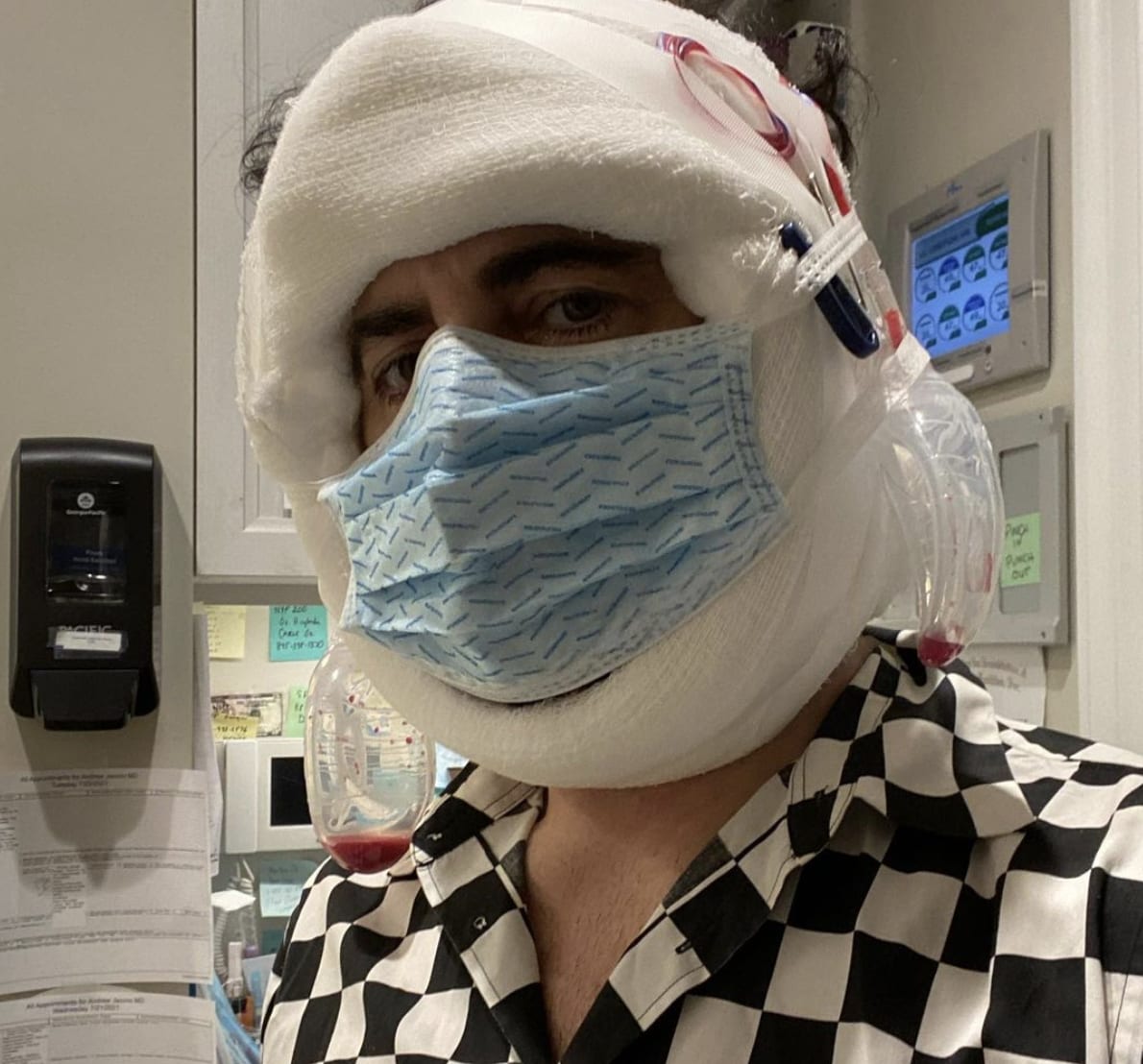 Deep Plane Facelift
Deep Plane FaceliftWhy Marc Jacobs’ Transparency About His Facelift Matters
We’re used to public figures crediting water, olive oil, and maybe a little self care for their ageless complexions, but the iconic fashion designer just changed that.
“LiveLoveLift.” That was the hashtag heard around the world when Marc Jacobs shared a bandaged selfie of himself late last month that led many to speculate that he had undergone a facelift. In true Marc Jacobs fashion, it didn’t take long for him to peel back the curtain and share the details of his surgery with the masses.
 Marc Jacobs/Instagram
Marc Jacobs/Instagram
The 58-year-old fashion designer had, in fact, gotten a facelift at the hands of Andrew Jacono, MD, a double board certified facial plastic and reconstructive surgeon. The New York City-based surgeon specializes in a technique known as the deep plane facelift, which is one of the most invasive but also one of the most effective types of rhytidectomy. Dr. Jacono performs the procedure in a way that leaves the skin attached to the muscle to avoid tautness and create a more natural result. “Yes, you can look like yourself but just better after #plasticsurgery,” he wrote on Instagram in response to one of Jacobs’ post-op posts. “This is why I love the #deepplanefacelift.”
In the days since his surgery, Jacbos has chronicled his experience every step of the way. If you were already one of his 1.6 million Instagram followers, then you are used to seeing the ins and outs of his daily routine. Even so, there was something surprising — and refreshing — about watching a public figure share their aesthetic journey in real time.
He posted a picture of himself in a hyperbaric oxygen chamber, which is used to promote healing. We’ve also gotten several more selfies from the designer, showing the evolution of recovery. Three days post-op, Jacobs’ wrote that he was “ready for lewks,” as he showed off some minor swelling and bruising.
 Marc Jacobs/Instagram
Marc Jacobs/Instagram
By day six, those side effects had intensified. “Bruised. Sore. And super swollen,” he wrote on IG, adding that he was on his way to see Dr. Jacono for an HBOT treatment. The next day (i.e. one-week post-op), Jacobs said that he was “feeling the healing.” On day 10, the designer was updating us all that his stitches had been removed.
 Marc Jacobs/Instagram
Marc Jacobs/Instagram
Along the way, Jacobs has been punctuating his posts with hashtags like #NothingToHide and #NoShameInMyGame. With a jawline like that, who could blame him?
We so often write about the plastic surgery healing process and how patients plan their procedures with discretion in mind. The ability to recover quietly at home with undisrupted downtime factors into when surgeries are scheduled, and there is certainly nothing wrong with stepping away from the spotlight for a few weeks to heal.
In the past, when celebrities have chosen to disclose that they went under the knife, we hear from them after the swelling has subsided and they are back out in the public eye. By letting us in on the period in between, Jacobs is pioneering a new kind of transparency and paving the way for others to speak candidly about what to expect from procedures.
In an interview with Vogue, the designer confirmed his intention to normalize the conversation around cosmetic surgery. As he explained, he was a longtime patient of Fredric Brandt, MD, and began seeing NYC-based board certified dermatologist Paul Jarrod Frank, MD, after his passing. In addition to Botox® and filler, Jacobs said that he started getting thread lifts “to hold up his jowls” and the area of his face “where the skin was sagging.” When the benefits became a bit too short-lived for his taste, and Dr. Frank recommended a consultation with a plastic surgeon.
After consulting with Dr. Jacono, Jacobs knew he had met his man, and he never thought twice about sharing his experience. “I’m not covering my face. I’m not wearing sunglasses. I’m not incognito. I’ve got some scars around my ears, and my face is swollen, and I have a bruised neck, but I’m still posting on Instagram,” Jacobs told Vogue. “I don’t care. I don’t even see it as an effort to be transparent. I’m doing what I normally do, which is I’m living my life and sharing it with anybody who is interested.”
We’ve all read the celebrity interviews in which they play coy on what’s flowing into their fountain of youth, and Jacobs isn’t here for it. “It seems so crazy when an actor or public figure denies that they've done something,” he said. “And they say like, ‘Oh, it's olive oil, I bathe in seltzer.' It's like, come on. Like all those things might be true, but they're not why your neck is tight.” Not only does this behavior perpetuate unattainable notions of beauty, it also perpetuates the notion that having work done is something to be self-conscious about.
In response to one of Jacobs post-op pictures, Dr. Jacono praised his patient for his “transparency and authenticity” that will “give others the courage in their journey of self care to take control of their appearance.” In speaking with Vogue, Jacobs admitted he was surprised by the adulation he’s received, but he is hopeful for what it might mean for the future. “I think you just need to start a conversation, and then maybe that will have a resounding echo that helps people feel less ashamed,” he told the mag. “I just don’t think there’s shame in being vain.”
Insert our hand clapping emoji here.
More Related Articles
Related Procedures

AI Plastic Surgeon™
powered by'Try on' aesthetic procedures and instantly visualize possible results with The AI Plastic Surgeon, our patented 3D aesthetic simulator.

